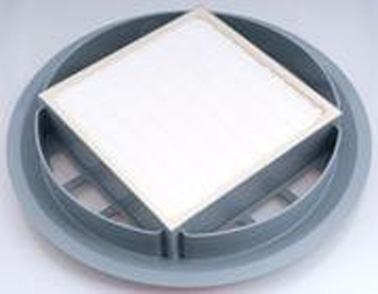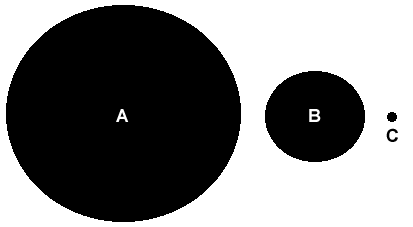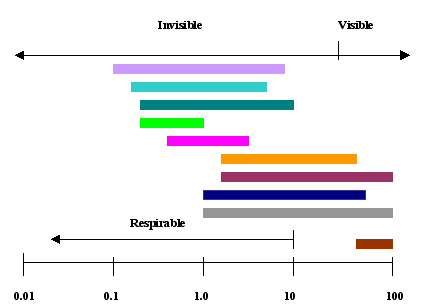HEPA FILTER COMPLETE

Nilfisk filters meet or exceed all standards for filtration efficiency. These filtration systems, including our HEPA (High Efficiency Particulate Air) and ULPA (Ultra Low Penetration Air) filters, can increase retention efficiencies up to 99.999% of particles, down to and including 0.12 microns in size. For more details, CLICK HERE
About Filtration
Filtration is an enormous issue when it comes to industrial vacuum cleaners. After all, if you take the time to vacuum an area, the last thing you want is the same material that you just vacuumed to be exhausted right back into the airstream. Depending on what you're collecting, the dust or debris may be hazardous to your product, or even your health. We, at Nilfisk Industrial Vacuums, realize the importance of ultra-efficient filtration systems and put our guarantee on every industrial vacuum cleaner we manufacture.
Particle Sizes
Small particles in the air, on the floor, and on your machinery can be dangerous for a number of reasons. Most importantly, they can contaminate your product and endanger your workers' health. Nilfisk industrial vacuum cleaners can filter down to 0.12 microns in size. One micron is equal to one-millionth of a meter, or 1/26,000 of an inch. On average, the human eye cannot see particles that are smaller than 50 to 60 microns. Particles that are 10 microns or less are considered respirable and can settle deep into the lungs – often causing adverse health effects. Respirable particles make up greater than 99% of the 7 million particles in every breath you take.
To give you a better idea of just how small a micron is, consider this: the diameter of a human hair is 80 to 100 microns in size.
If (A) is the diameter of a human hair (100 microns), then (B) is the size of the smallest particle visible to the human eye (50 microns), and (C) is the size of a 0.5 micron particle.
Nilfisk industrial vacuum cleaners features filtration systems that are capable of filtering down to 0.12 microns!
Particle Size Specturm

Principles of Filtration

Now that you have an idea of the types of dust and debris our vacuum cleaners are capable of removing, we should explain how a filter works. For particle filtration, the airborne particles that have been vacuumed must come in contact with the filter media. There are five basic mechanisms by which this can happen: straining or screening, impaction, interception, diffusion, and electrostatic enhancement.
Straining, also know as screening, occurs when the spaces between the fibers of the filter media are smaller than the particles, therefore they are captured.
Impaction takes place when larger particles with adequate momentum are unable to follow the airstream around the fibers of the filter media and therefore collide into it and are captured.
Interception occurs when particles are small enough to follow the airstream, yet come within a half-particle diameter of the fiber. The particle is captured by the fiber by means of molecular surface attraction.
Diffusion, or the Brownian movement, takes place when small particles that don't have sufficient momentum because of their low mass are bombarded by air molecules, interrupting the particles' pathway, therefore causing them to move about randomly. The irregular path of the particle increases the likelihood of being captured by the fibers of the filter. The smaller the particle, the stronger this effect.
Electrostatic Enhancement occurs when fibers have a permanent electrostatic charge. Since particles are attracted to the opposite charge, they gravitate toward the filter fibers, allowing the fibers to capture the particles.
To ensure that your vacuum cleaner meets the dust control requirements for your specific cleaning application, Nilfisk-Advance, Inc. offers a complete line of filters. Each filter is designed to optimize the performance of your Nilfisk vacuum cleaner. They are ideal for the control of food ingredients, grains, ultra-fine pharmaceutical powders, powder paint, lead, asbestos, silica, pesticides, and other nuisance and hazardous dusts and debris. For critical environments, our filters meet cleanroom standards up to and including ISO 4 (Class 10) standards.
Nilfisk filters meet or exceed all standards for filtration efficiency. These filtration systems, including our HEPA (High Efficiency Particulate Air) and ULPA (Ultra Low Penetration Air) filters, can increase retention efficiencies up to 99.999% of particles, down to and including 0.12 microns in size.